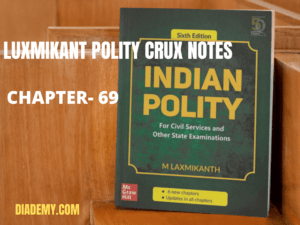
Political Parties
| Political parties | Voluntary association of group of individual who shares same political views and want power to gat desired goal [Const. means National Interest].
(i) Reactionary Parties (Ii) Conservative Parties Leftist, Centrist, Rightist (Iii) Liberal parties (iv) Radical parties |
| PARTY SYSTEM IN INDIA | The Indian party system has the following characteristic features:
1. One party system – USSR [No opposition] 2. Two Party System – USA & Britain 3. Multi-Party System – Switzerland, Italy, India. · Size India (inc.) · Different culture (inc) · Geo, Bio, Socio, diversity (inc) · Multiparty system · After 16th L.S. election, 6 (N.P) · 47 (S.P) + 1593 unregistered parties · Though Multiparty system 1947 – 1967 (Single Party dominance in India) – o Janta Party (1977) o Janta Dal (1989) o BJP – (1991) |
| Reason | 1. No clear cut ideology – quite similar Ideology.
2. Charismatic power of leaders – called asa there are Polical personalities rather than political parties. 3. Base on religious and regional – loose ground at National Level. |
| Emergence of Regional Parties | o BKP in Odissa, DMK & AIADMK – TN, Akali Dal Punjab etc. Played a important Role in coalition governments & hence were able to raise National issues.
o But we see deviation in Political Parties like Congress, Janta Dal, and TDP etc. Due to Lust for power & Material consideration. So every time parties disintegrate & Merge. o Lack of effective opposition – failed to play a constructive Role. |
| RECOGNITION OF NATIONAL AND STATE PARTIES | · To remove all the parties are registered for them & were given symbol and recognised as national/state – poll performance.
· Recognition gave benefit such as – symbol, time for political broadcast on TV & Radio + access to electoral Rolls. · Only one proposer for filling nomination. · These parties are allowed to have 40 “star campaigners” during the time of elections and the registered–unrecognized parties are allowed to have 20 “star campaigners”. · The travel expenses of these star campaigners are not included in the election expenditure of the candidates of their parties. · National Party – Symbol of National party is throughout the country. · State Party – Symbol of State party is only state. |
| Conditions for Recognition as a National Party | 1. If it secures 6% of valid votes polled in any four or more states at a general election to the Lok Sabha or to the legislative assembly; and, in addition, it wins four seats in the Lok Sabha from any state or states.
2. If it wins 2% of seats in the Lok Sabha at a general election; and these candidates are elected from three states. 3. If it is recognised as a state party in 4 states. |
| Conditions for State Party | 1. If it secures 6% of the valid votes polled in the state at a general election and it wins 2 seats in the assembly of the state concerned.
2. If it secures 6% of the valid votes polled in the state at a general election to the L. Sabha from the state concerned & 1 seat in the Lok Sabha from the state concerned. 3. If it wins 3% of seats in the legislative assembly at a general election to the legislative assembly of the state concerned or 3 seats in assembly. 4. If it secures 8% of the total valid votes polled in the state at a General Election. 5. 6 National parties, 47 State parties & 1593 registered-unrecognised parties in the country. |
Get all essential Crux notes by clicking here https://diademy.com/product/staticcrux/